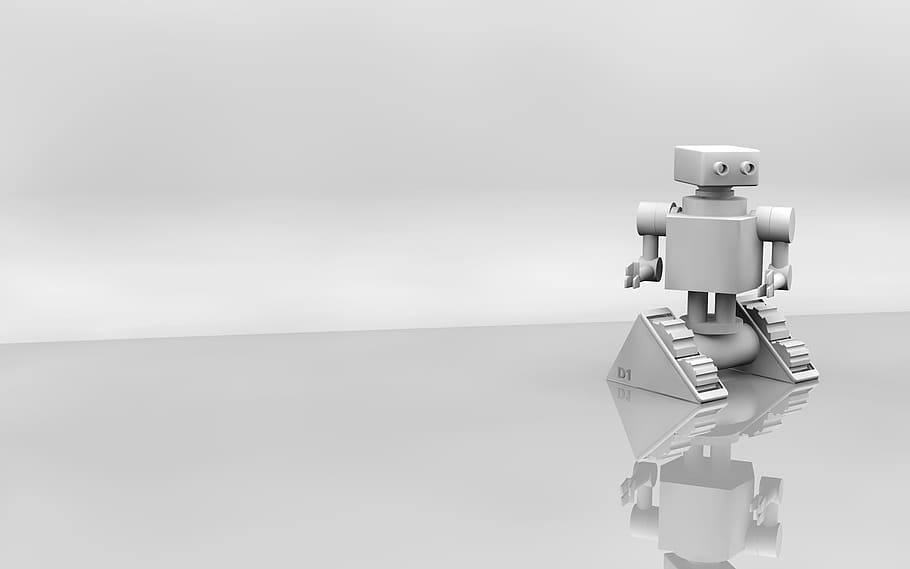Robot machine tending has finally come of age as industrial robot manufacturers turn to innovation to address the demand for automation solutions. If you ever imagined what a world without human factory workers would be, robot machine tending gives a hint of this future.

What Is Robot Machine Tending Exactly?
The term robot machine tending is often used quite liberally, especially if you were to go by manufacturer-generated documents. Robot machine tending is, however, the use of robots as opposed to human workers to operate machines and inputs in the production process.
For instance, a robot could be used to weld parts together using a welding machine. This they can do repeatedly and accurately depending on the production setup. Here are five of the most common robot machine tending applications today:
1. Loading Items to Machines
Pick, and place is a basic robot machine tending application. Here a robot is programmed to pick raw materials or objects at set intervals and place them accurately onto any type of machine. For example, a robot can be used to pick materials and load them into a CNC, milling, or mixing machine.
Loading is, by far, the most common robot machine tending application today due to the ease of deployment and availability of grippers. Robots used for this kind of work don’t need to be sophisticated in any way. Still, they can cut production costs by a significant margin. At the same time, they relieve human workers from these tedious and potentially straining repetitive jobs.
2. Injection Molding
A widespread application for robots in machine tending is injection molding. Here a trained robot arm is used for the entire process, including labeling, cutting screws, removing parts, lasering and labeling items. Robots are much better at this as compared to human workers as they tend to be more precise and can do the same task repeatedly, maintaining the same standard across jobs.
3. General Machining
In a typical factory floor or machining jobs, there would be dozens of different or similar machines that need to be attended to. This is a task that would typically require dozens of operators moving from machine to machine and interacting with each machine individually. However, robot machine tending makes it possible to automate the process.
In some deployments, a single unmanned robot could be used to attend to several machines on different cells, especially if they do the same tasks. For instance, there is no need to have ten workers attending to ten milling machines when you could have a single mobile robot do the same and with higher efficiency.
4. Welding
Robot machine tending is commonly used in standardized welding jobs where a robot can communicate with a welding machine and use sensors to determine when the job is completed. Typically, a robot will load the part that needs to be welded into a machine and sends instructions to the machine. It then unloads the part to another cell or conveyor and repeats the entire process with the next part in line.
Robots can save a manufacturer or assembler a lot of time and money by handling several welding jobs on a continuous shift. In contrast, it would be impossible for a human welder to do the same job while maintaining standard quality over a long period due to the conditions associated with welding.
5. Compression, Cutting and Pressing Jobs
Robot machine tending is particularly useful when it comes to potentially dangerous jobs such as operating cutting machines, compression, and pressing. Instead of having a human operator do such tasks, a custom-design robot can take care of the entire process, including loading materials, operating the machine, and monitoring progress closely.
Given the risk associated with such tasks, insurance premiums, and possible lawsuits in case of workplace injuries can be costly to any business. Naturally, robots don’t attract these costs or risks.
Final Remarks
Robot machine tending is one of the most promising industrial technologies today. With cheaper robots and cobots coming out, we will continue to witness more adoption and innovation in this sector.